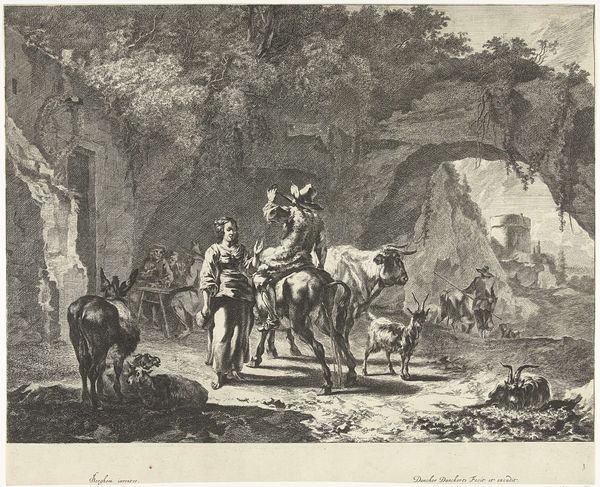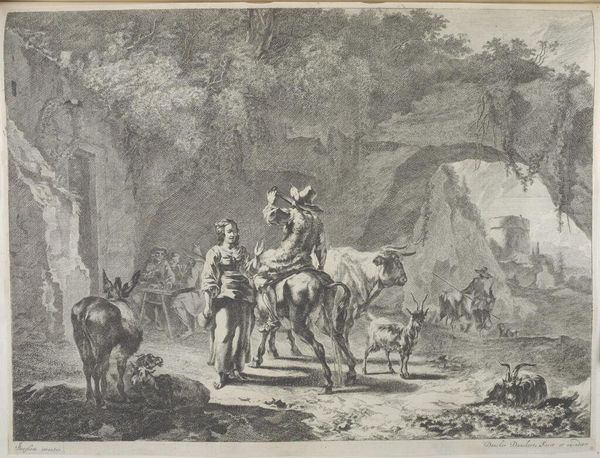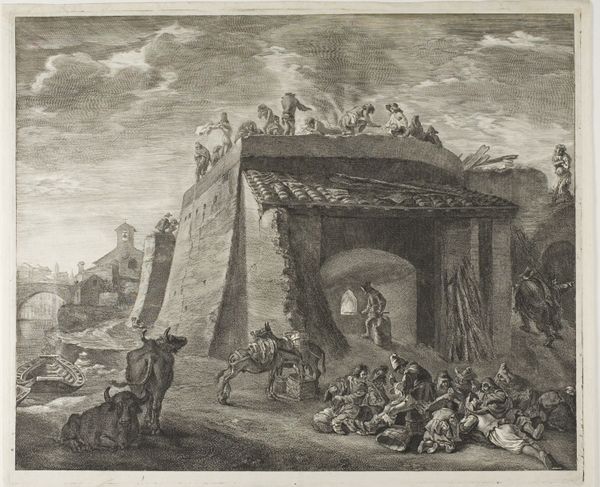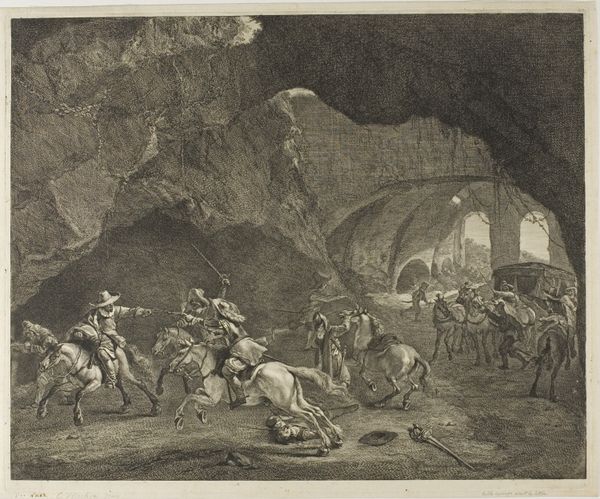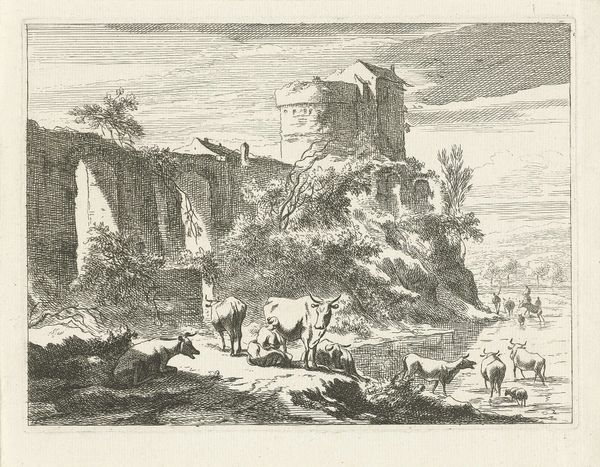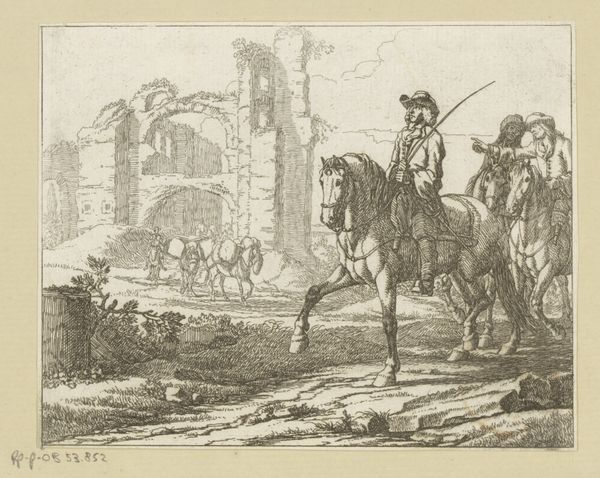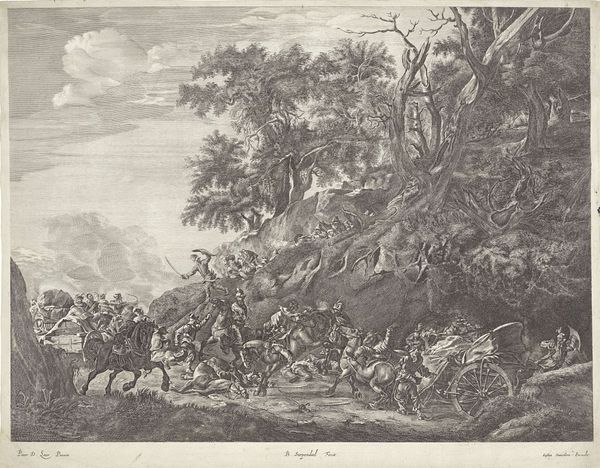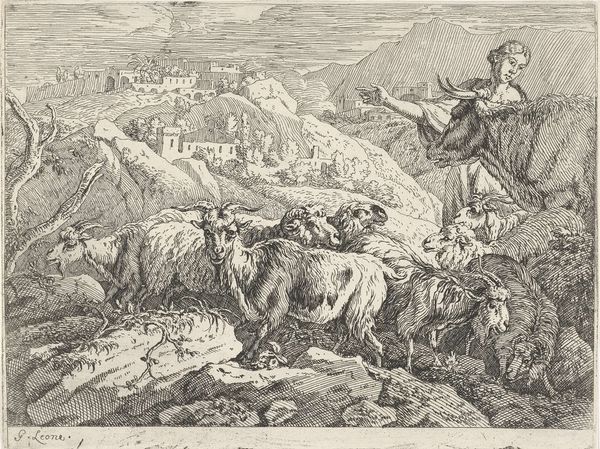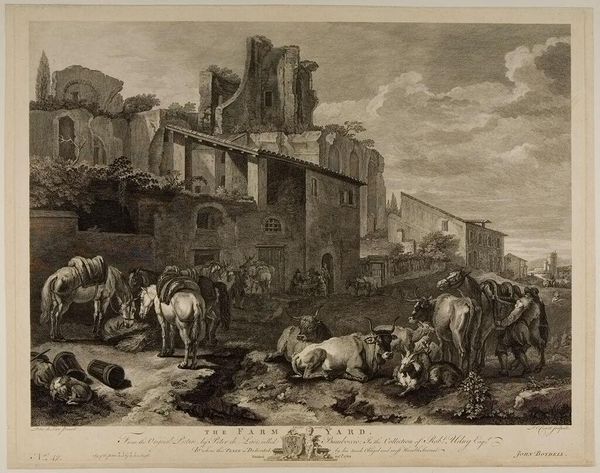
print, engraving
# print
#
pen sketch
#
pencil sketch
#
old engraving style
#
landscape
#
pen work
#
genre-painting
#
history-painting
#
engraving
#
realism
Dimensions: height 404 mm, width 517 mm
Copyright: Rijks Museum: Open Domain
Editor: So, this engraving, "Italianiserend landschap met herders en vee" by Abraham Delfos, dating roughly from 1741 to 1820… The detail is striking. I am drawn to the textures; they almost feel tactile despite being a print. What do you make of the artist's choice to depict such a scene using engraving? Curator: Considering the materiality of engraving at that time, it becomes quite clear. Engraving allowed for mass production, spreading the image of the Italian ideal to a broader audience. We can investigate who profited, how it was distributed. Note the labor that was necessary for producing this plate in series; how does this change your perception of it? Editor: That's fascinating! The “Italian ideal” available as a reproducible commodity... almost like a landscape postcard. It highlights accessibility, but at the expense of perhaps the artist’s hand? Curator: Precisely. Delfos isn’t just representing a scene. He’s participating in a system. What was the function of such imagery in that era, and for whom? Consider who would purchase this. Did they see the landscape as mere documentation? Did it have more utility or something beyond? Editor: Maybe it reinforced the status of wealthy landowners, or inspired longing amongst those who would never have such opportunities. So the value isn't purely aesthetic, but linked to social and economic power. Curator: Exactly. How does understanding the processes involved—from Delfos's workshop to the merchant's shop to the customer's house—alter your interpretation of this idyllic landscape? What does this choice of mass produced art say about access to landscape as subject matter? Editor: It makes me think about art and production. The materials and the process aren’t neutral; they're deeply embedded in a particular context. This connects art directly to the culture surrounding its making. Thank you for changing my perspective! Curator: And thank you. Recognizing art as bound to materials, labor, and market illuminates art's vital links to society.
Comments
No comments
Be the first to comment and join the conversation on the ultimate creative platform.
